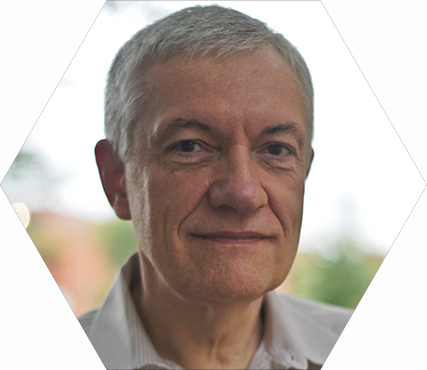Education
- Ph.D., The Pennsylvania State University, 1995
- M.S., The Pennsylvania State University, 1987
- B.S., University of Zagreb, Croatia, 1979
Background
Bojan Petrovic joined Georgia Tech in 2007 as a Professor. Prior to that he acquired industrial experience as a Fellow Scientist in Westinghouse Science and Technology where his primary responsibility was as the project Deputy Director on the development of the advanced, modular IRIS reactor.
Research
- Nuclear and Radiological Engineering: Reactor physics, advanced reactors design, nuclear fuel cycle and waste management, modeling and simulations of nuclear systems, industrial and medical applications of nuclear technology.

Dr. Petrovic's current research focuses on advanced reactor design, nuclear fuel cycle and waste management, and related modeling and simulation methods.
Over the past ten years, he has been involved in the development of the IRIS Reactor, within an international team of 19 organizations from ten countries. IRIS is an advanced medium power (335 MWe) integral-type PWR, based on proven light-water technology, but incorporating many innovative solutions that improve its operation, safety, security, and economics. Advanced reactors have the potential to offer full benefit in synergy with advanced fuel cycles. Recently, the focus of this research is shifting to judicious selection of fuel cycle, reprocessing, and partition and transmutation options, which may significantly reduce the radiotoxicity of spent nuclear fuel and enable its safe and economical ultimate disposal.
Novel reactor designs and advanced fuel cycles pose new challenges and require improved, more accurate methods of modeling and simulations. Dr. Petrovic's interest is in developing approaches for using Monte Carlo and hybrid deterministic-Monte Carlo methods (for eigenvalue as well as shielding applications) in a way that will be practical and relevant for analysis of complex nuclear systems.
Dr. Petrovic has a strong interest in interdisciplinary areas, and his research projects have included collaboration related to industrial and medical applications of nuclear technology. His recent research in computational medical physics focuses on proton therapy. His research has been sponsored by the Department of Energy, industry and utilities.
- Westinghouse Corporate-Level Signature Award
- American Nuclear Society
- Reactor Physics Division Program Committee Chair, 2006-2009
- Mathematics and Computation Division Best Benchmark Paper Award, 1995
- Reactor Physics Division, Best Paper Award, 1993 and 2008
- Progress in Nuclear Energy
- Guest Co-Editor for a special issue, 2011
- ANS Annual Meeting, Technical Program Chair, 2009
- Nuclear Technology
- Member of the Editorial Board
- Guest Editor for two special issues, 2005
- International Conference on Advances in Nuclear Fuel Management III Technical Program Chair, 2003
- IAEA, Invited Expert/Consultant
Patent
- Nonintrusive Method for the Detection of Concealed Special Nuclear Material, U.S. Patent No. 7,151,815, with F. H. Ruddy, A.R. Dulloo, J.G. Seidel, T.V. Congedo, V. N. Kucukboyaci, December 2006.
Representative Publications
- B. Petrovic, F. Franceschini, M. Carelli and E. Lahoda. 2010. Requirements Driven Comprehensive Approach to Fuel Cycle Back-End Optimization", 11th Information Exchange Meeting on Actinide and Fission Product Partitioning and Transmutation (11IEMPT), San Francisco, CA, November 1-5, 2010.
- B. Petrovic and D. Hartmangruber. 2011. Using SCALE6/MAVRIC to Determine the Dose Rate Distribution in the IRIS Power Plant Control Room and Preliminary Estimate Throughout the Reactor Building. Nuclear Technology.
- B. Shi and B. Petrovic. 2011. Implementation of the Modified Power-Iteration Method to Two-Group Monte Carlo Eigenvalue Problems. Annals of Nuclear Energy, 38, 781-787.
- F. Franceschini and B. Petrovic. 2008. Design and Analysis of IRIS 100% MOX Core. Annals of Nuclear Energy 35, 1587-1597.
- M. D. Carelli and B. Petrovic. 2006. Here’s Looking at IRIS. Nuclear Engineering International 51(620), 12-18.

